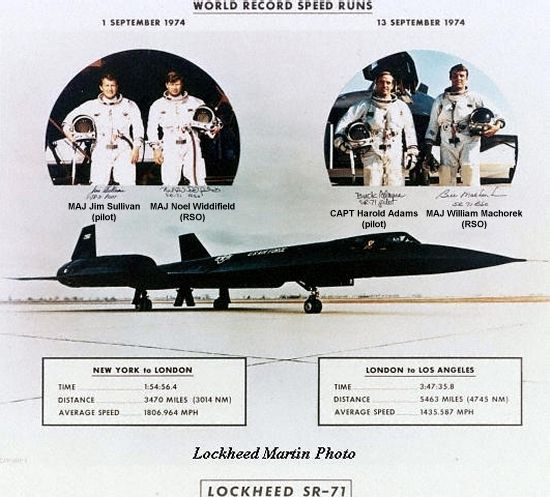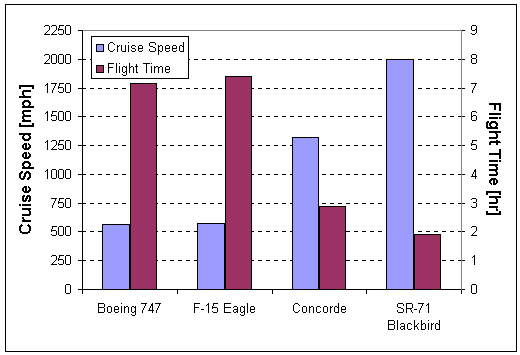|
||||||||||
|
|
||||||||||
|
||||||||||
|
|
||||||||||
So why would a combat aircraft and an airliner travel at comparable speeds? Although military fighters and bombers are generally capable of reaching supersonic speeds, they spend most of the time flying below the speed of sound around Mach 0.8. This speed equates to about 560 mph or 900 km/h at normal cruising altitudes. Most commercial planes like the Boeing 747 and Airbus A300 also cruise in this speed range.
The reason planes so often fly in this speed range is that the fuel efficiency of jet engines decreases significantly when operating close to or above Mach 1. In particular, aircraft flying faster than the speed of sound typically require an afterburner. An afterburner is an additional section at the end of a jet engine into which additional fuel is burned to provide a boost in thrust. Unfortunately, afterburners use up fuel in a hurry, making supersonic flight very inefficient. As a result, most military aircraft, like the F-15 Eagle, spend the majority of the time flying below the speed of sound. The afterburner is only used for brief periods and only in combat situations where high speed is necessary.

A transatlantic flight is not one of those situations. In fact, such a flight is what we would typically classify as a ferry mission. The purpose of a ferry mission is to transfer an aircraft from one operational region of the world to another. In other words, a military aircraft will typically be based in one region of the world, such as the Middle East or the continental United States. Most planes aren't equipped with enough fuel or supplies for the crew to routinely fly over the very long distances between major regions of the world. When the need arises to transfer a plane from one region to another, the result is a ferry mission. In the example you've posed, we might presume that the aircraft is being ferried from its home base in the US to a forward base in Europe.
Regardless, the nature of the ferry mission requires the plane to maximize the distance it can travel at the expense of speed and maneuverability. To that end, the aircraft cruises below the speed of sound and does not use afterburners to save fuel. In addition, the plane is usually stripped of armaments, except perhaps a couple of self-defense missiles, and loaded with external fuel tanks to maximize range.
However, there are a few exceptions to the limitations described above. Probably the most notable of these was the SR-71 Blackbird high-speed reconnaissance plane. The SR-71, which was retired from military service in 1998, cruised at an astonishing Mach 3, or about 2,000 mph (3,220 km/h). On 1 September 1974, a Blackbird set a world speed record from New York to London by flying the 3,470 mile (5,585 km) distance in a remarkable 1 hour and 55 minutes. The return trip, covering over 5,460 miles (8,785 km) from London to Los Angeles, took a mere 3 hours and 48 minutes.

The only commercial airliner capable of posting similar flight times was the recently retired Concorde. With a cruising speed of about Mach 2, or 1,320 mph (2,125 km/h), the Concorde set a New York to London record of 2 hours and 53 minutes on 7 February 1996.

The above chart provides a direct comparison of the cruise speeds and flight times for some representative
military and commercial jet-powered aircraft.
- answer by Jeff Scott, 30 November 2003
Related Topics:
What is the fastest passenger aircraft on commercial flights? What is the speed of Concorde?
Now that Concorde has been retired, what is the fastest passenger aircraft in current service?
What are the maximum speeds of the F-22, F-16, B-2, SR-71, and F-18?
Read More Articles:


|
Aircraft | Design | Ask Us | Shop | Search |

|
|
| About Us | Contact Us | Copyright © 1997-2023 | |||
|
|
|||